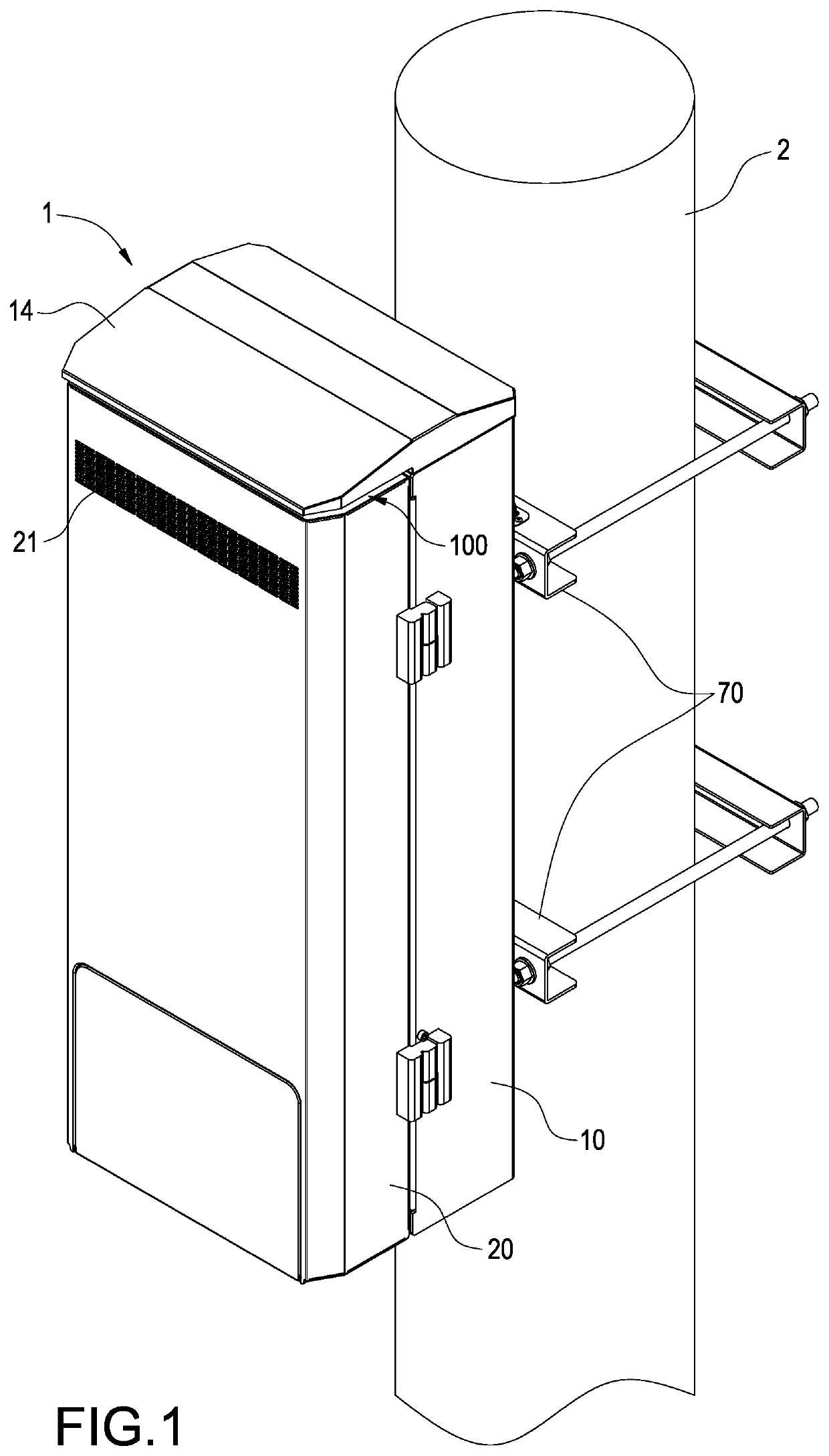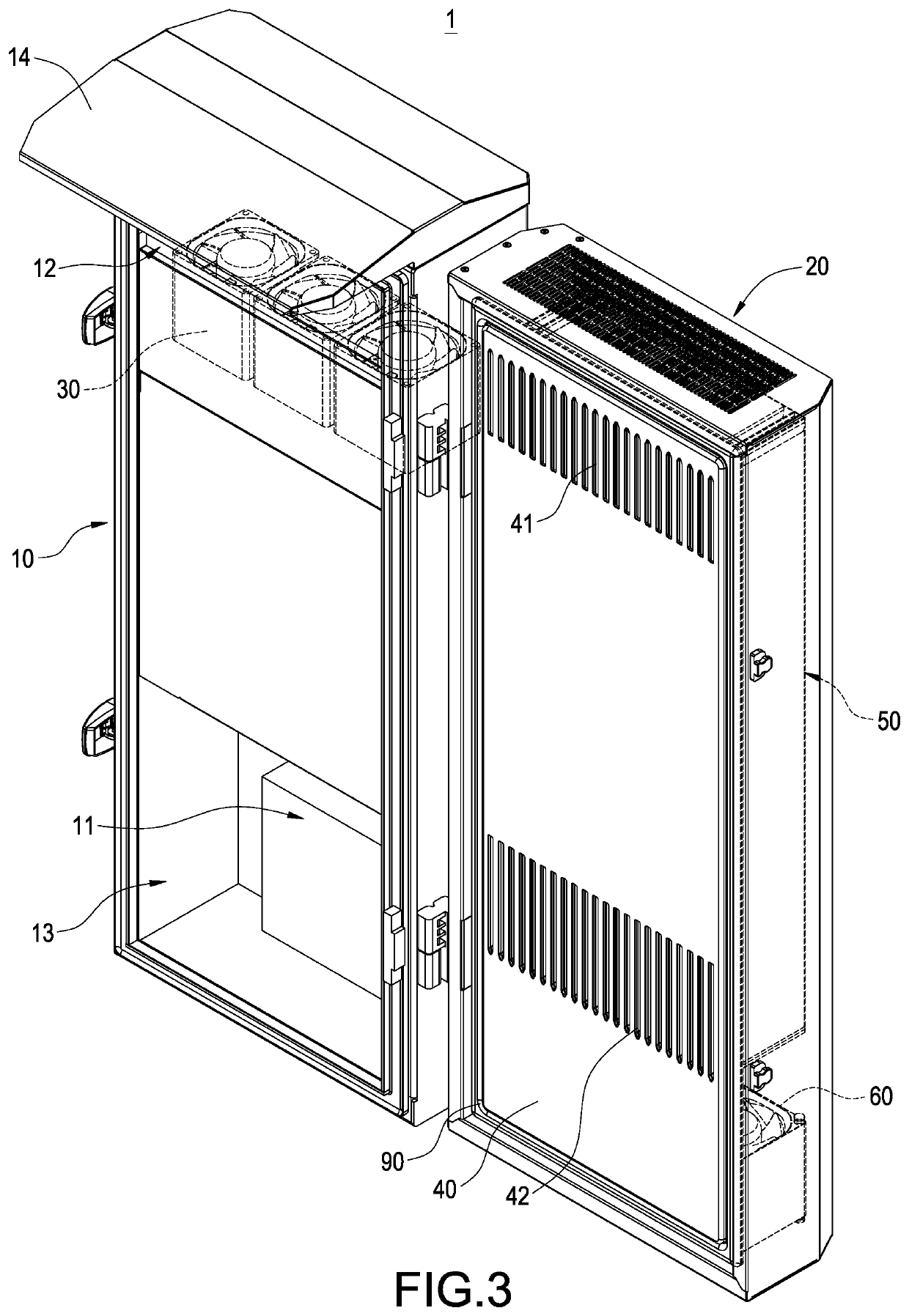Heat exchange structure of telecommunication cabinet
a technology for telecommunication cabinets and heating elements, which is applied in the direction of electrical apparatus construction details, cabinet/cabinet/drawer, instruments, etc., can solve the problems of high power consumption of 5g base stations, inability to effectively dissipate heat generated by heating elements within the cabinet, and inability to meet the needs of users, so as to improve heat exchange efficiency and heat dissipation effect, improve dustproofing and waterproofing, and increase air resistance
- Summary
- Abstract
- Description
- Claims
- Application Information
AI Technical Summary
Benefits of technology
Problems solved by technology
Method used
Image
Examples
Embodiment Construction
[0016]In the present disclosure, numerous specific details are provided, such as examples of apparatus, components, and methods, to provide a thorough understanding of embodiments of the invention. Persons of ordinary skill in the art will recognize, however, that the invention can be practiced without one or more of the specific details. In other instances, well-known details are not shown or described to avoid obscuring aspects of the invention.
[0017]Please refer to FIG. 1 to FIG. 3, which depict a schematic view of the telecommunication cabinet in an operation status of this disclosure, a perspective schematic view of the telecommunication cabinet of this disclosure and a perspective schematic view of the second cabinet body being opened of this disclosure. The heat exchange structure of the telecommunication cabinet 1 of this disclosure includes a first cabinet body 10, a second cabinet body 20, at least one internal fan 30, a partition board 40, a plurality of heat dissipation ...
PUM
 Login to View More
Login to View More Abstract
Description
Claims
Application Information
 Login to View More
Login to View More - R&D
- Intellectual Property
- Life Sciences
- Materials
- Tech Scout
- Unparalleled Data Quality
- Higher Quality Content
- 60% Fewer Hallucinations
Browse by: Latest US Patents, China's latest patents, Technical Efficacy Thesaurus, Application Domain, Technology Topic, Popular Technical Reports.
© 2025 PatSnap. All rights reserved.Legal|Privacy policy|Modern Slavery Act Transparency Statement|Sitemap|About US| Contact US: help@patsnap.com



